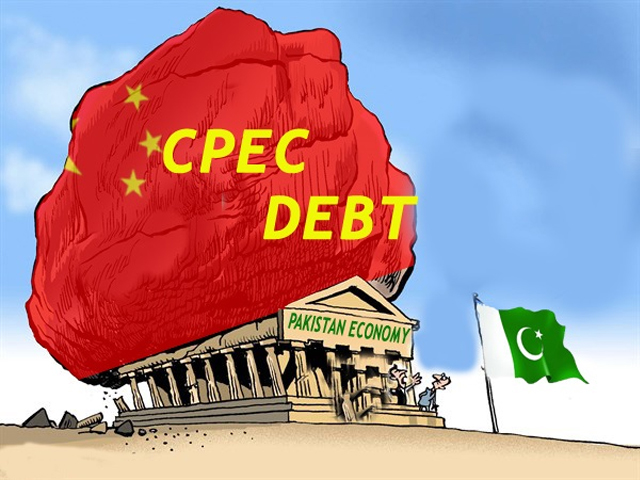
Power to the people: Pakistan’s mismanagement of energy
As temperatures rise this summer, so will the temper of the people of Pakistan.
After years of mismanagement and neglect, Pakistan’s electricity supply is almost giving up the struggle. Just as the summer heat is taking its toll, daily blackouts are being imposed for up to 18 to 20 hours a day. This is creating major disruptions to commerce and industry, adding drastically to inflation and unemployment, causing further distress and unrest to the people of Pakistan.
The problem has been in the making for many years. The gap between supply and demand is now estimated at 40% because of an aged and inadequate infrastructure; a lack of foresight or planning and inadequate investment in the utility that failed to keep pace with growing needs.
Recently, the government has even failed to pay its own bills for electricity, defaulting on payments to nine independent power providers in a situation known as “circular debt”, which currently runs at $880 million. What has been collected from consumers is not enough to cover the cost of generation. The government’s energy sector debt is around $4.4 billion and the recent default could lead to a downgrade in the country’s credit rating.
Pakistan has relied far too long on expensive oil-based electricity and lagged behind in research and development for cleaner, cheaper sources such as solar and wind power. 81% of Pakistan’s electricity is generated from oil and gas which costs around $9.4 billion; this is biggest cost on Pakistan’s import bill.
The next administration will inherit a difficult and escalating problem and it is no longer viable to simply blame the preceding administration for neglecting a predictable crisis.
The good news is that solutions exist, both short and long term.
Better maintenance of existing power plants could provide higher capacity. Solar and wind power stations are cheaper to build than dams or nuclear energy plants. Pakistan’s 30 year coal reserves in Thar are often proposed as a solution, but the cost of extracting and processing it seems to outweigh its utility.
Pakistan has a huge potential to produce electric power from hydro-electric power plants. Hydro power has great promise and if all the projects with completed feasibility studies were to be implemented, Pakistan would have sufficient power for the next 20 to 25 years.
However, until the industry is functioning efficiently for existing consumers, it will be hard to raise capital for the enormous investments needed to take the industry forward. Considering the state it is in at the moment, one must wonder, who is going to pay for the new dams, necessary infrastructure and new nuclear energy plants?
Pakistan has been receiving energy aid from the US since the 1960's; USAID funds built two huge hydroelectric projects, providing for 70% of the country’s needs at the time. Pakistan’s share of USAID is able to fund energy this year, however, is only $112 million– not enough to solve the problem and too little to earn Pakistan’s gratitude.
While Pakistan is preventing the North Atlantic Treaty Organisation (NATO) convoys from travelling through the country to Afghanistan, it should not expect further generosity from the US Congress in the near future and should be looking to China and Russia instead.
But the notion that China will replace the US has been “overstated” by the Pakistani officials many times.
Chinese investment in Pakistan has actually been quite modest– more like $1.83 billion than the $25 million often quoted by politicians. China’s expressions of goodwill do not always successfully translate to actual funding as evidenced by its referral of Pakistan’s requests to the International Monetary Fund (IMF).
It was announced on May 30, 2012 that Pakistan will seek a further IMF loan to pay off outstanding IMF loans. But the IMF is not very pleased with the performance of the Pakistani government so far, as it has failed to reduce both unemployment and financial deficit of Rs1 trillion. The good news is that the World Bank has allocated an unprecedented $1.8 billion for Pakistan's development projects this year, including the proposed Dasu Dam on the Indus River in Kohistan to generate 1,500MW of electricity.
This will help but still may not be enough.
The unsustainable power subsidy of Rs 346 billion should be diverted towards rebuilding the electricity grid and investing in wind and solar generation as soon as possible, possibly with the provincial governments taking more responsibility for small scale alternative power generation.
The government must address the urgency of the shortfall in electrical energy supply brought about by insufficient generating capacity, an inadequate transmission system, an unforeseen increase in demand and a failure to plan for the future.
This will be a huge challenge for the next administration as the present leaders seem to have no immediate solutions while Prime Minister Gilani is too preoccupied with holding onto power and countering the calls for his resignation.
As temperatures rise this summer, so will the temper of the people of Pakistan, to whom the call of power to the people is taking on a whole new meaning.




COMMENTS (14)
Comments are moderated and generally will be posted if they are on-topic and not abusive.
For more information, please see our Comments FAQ